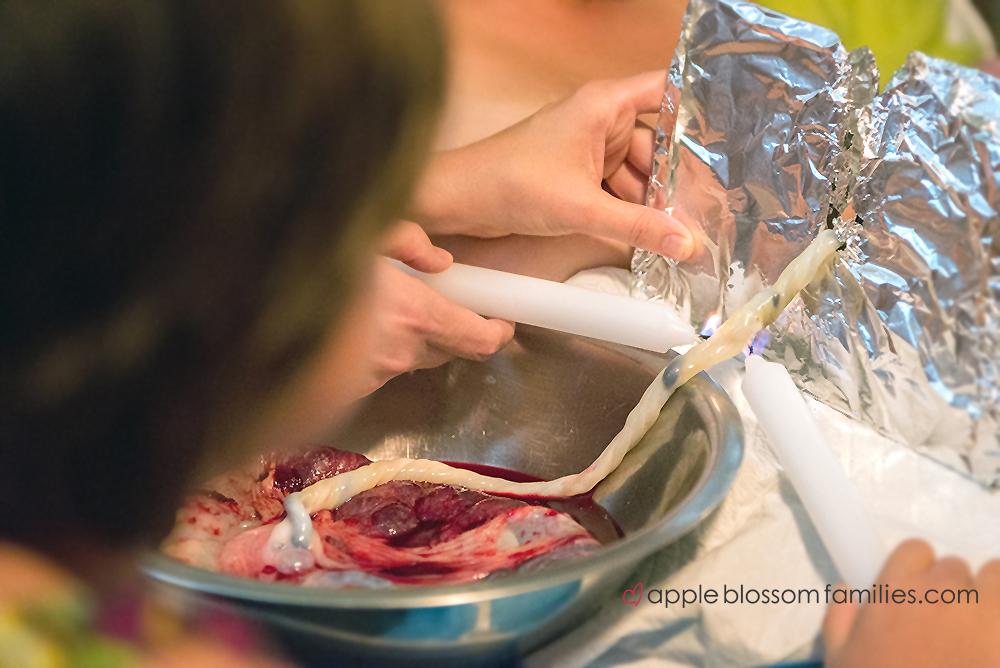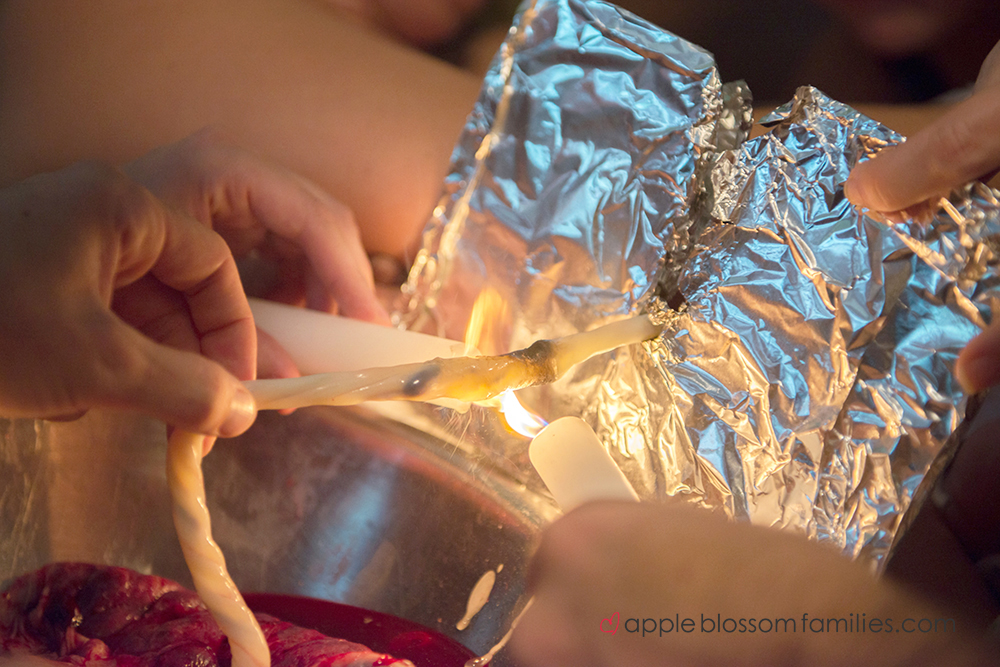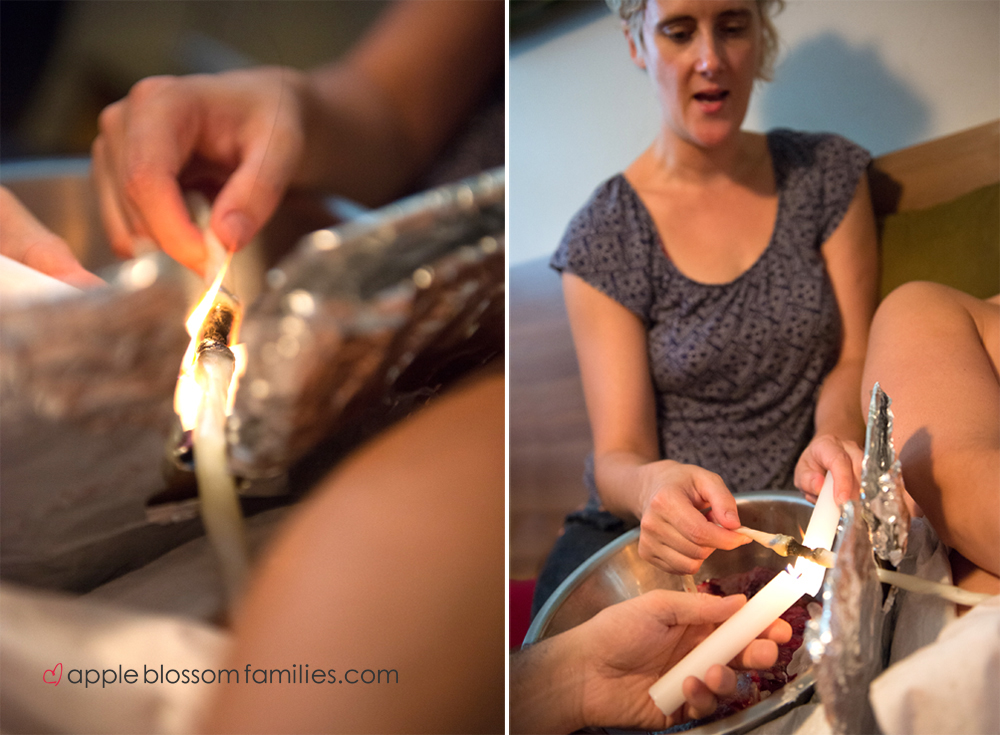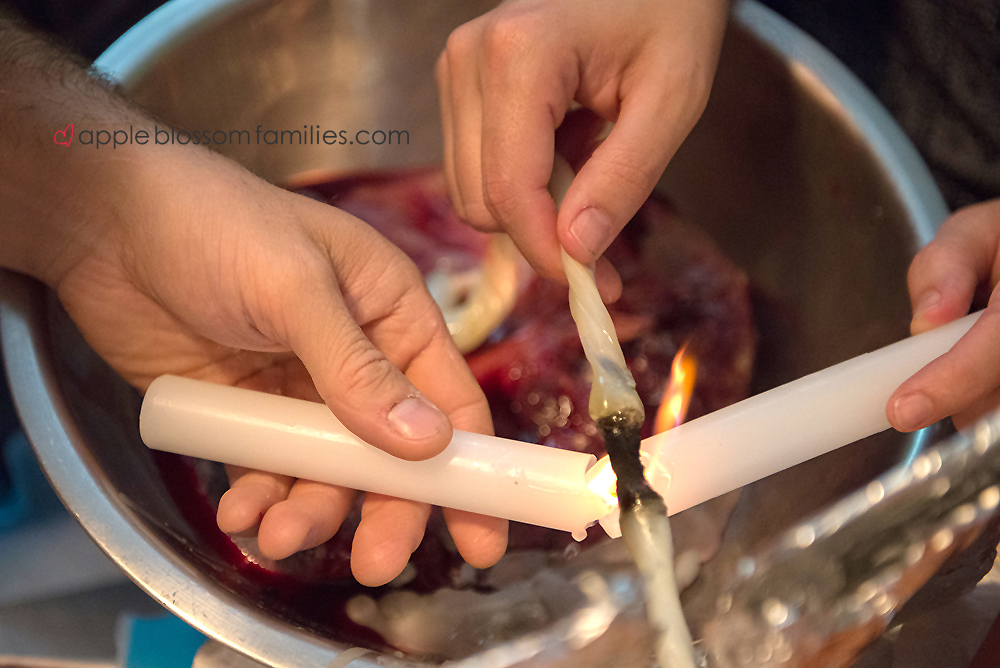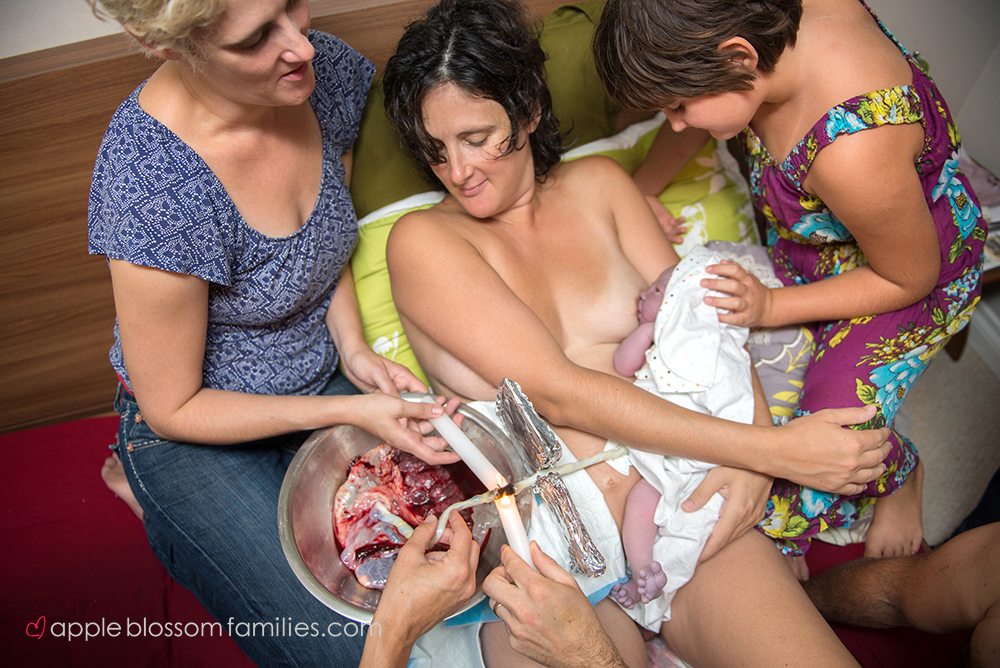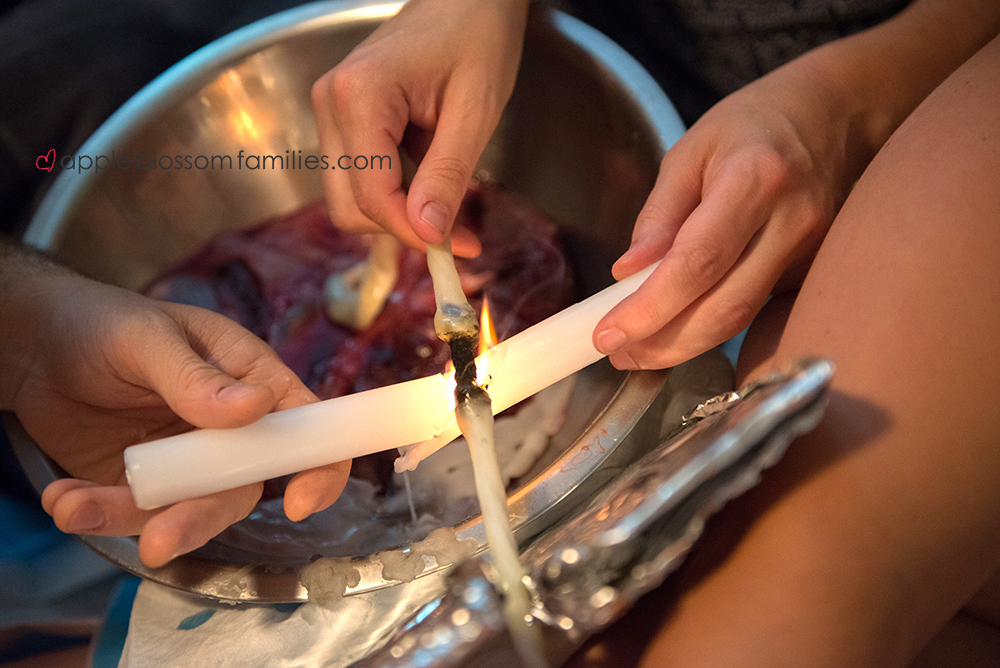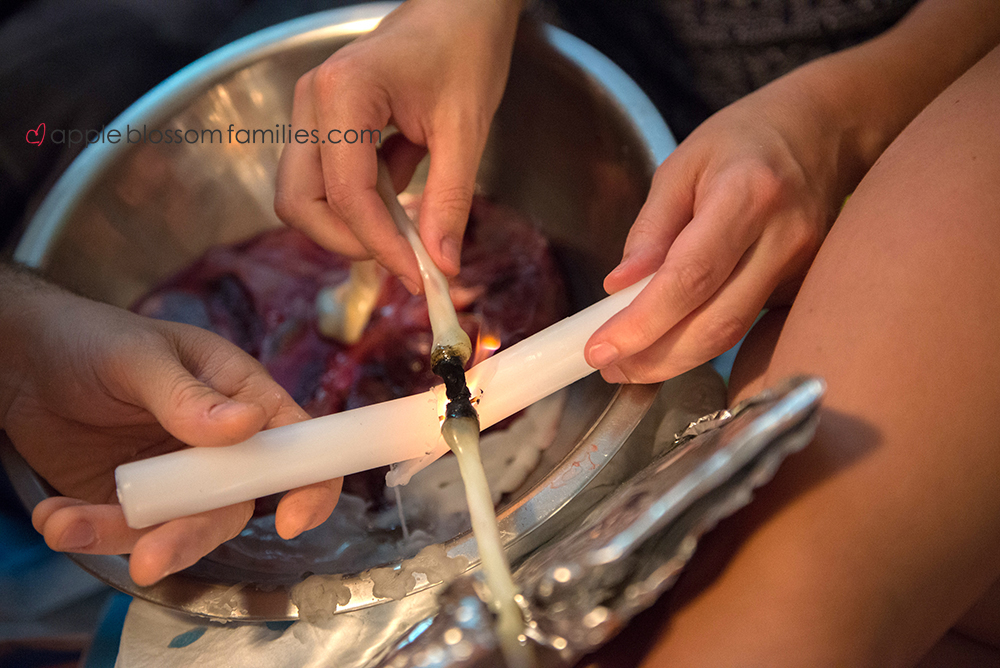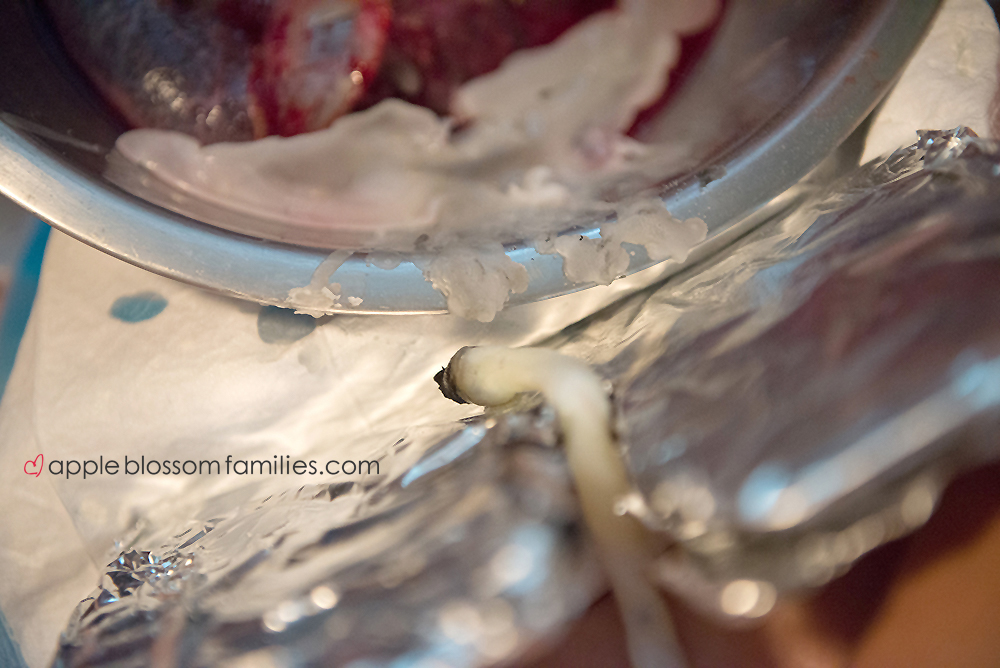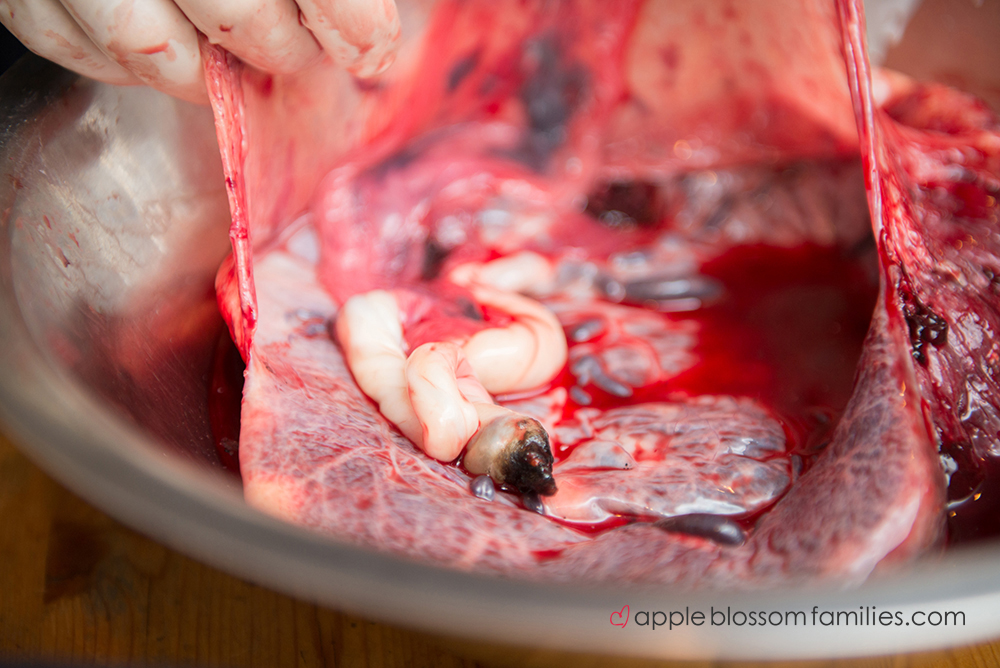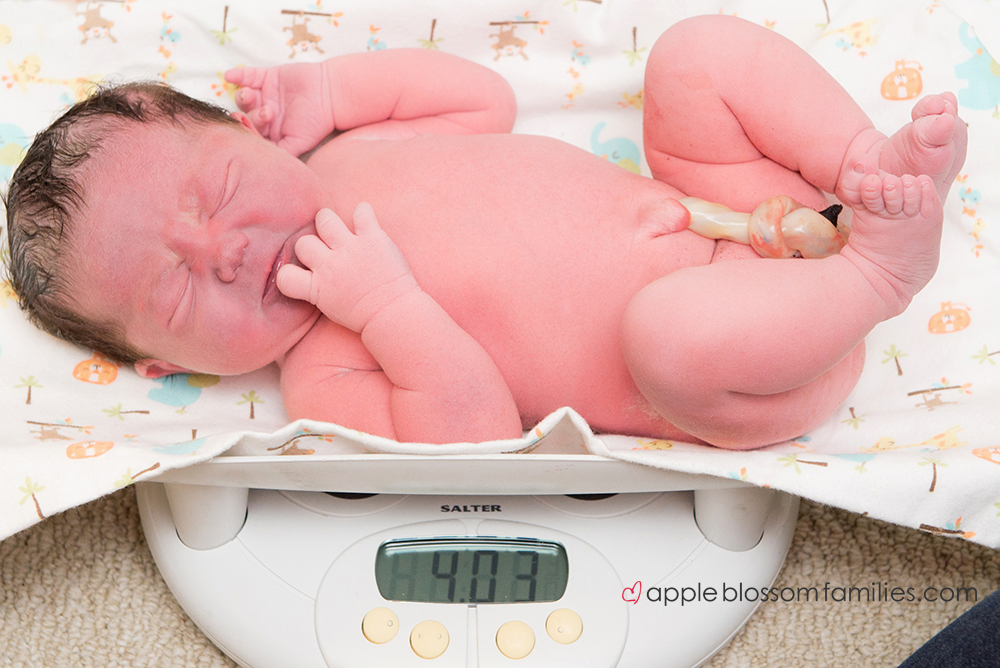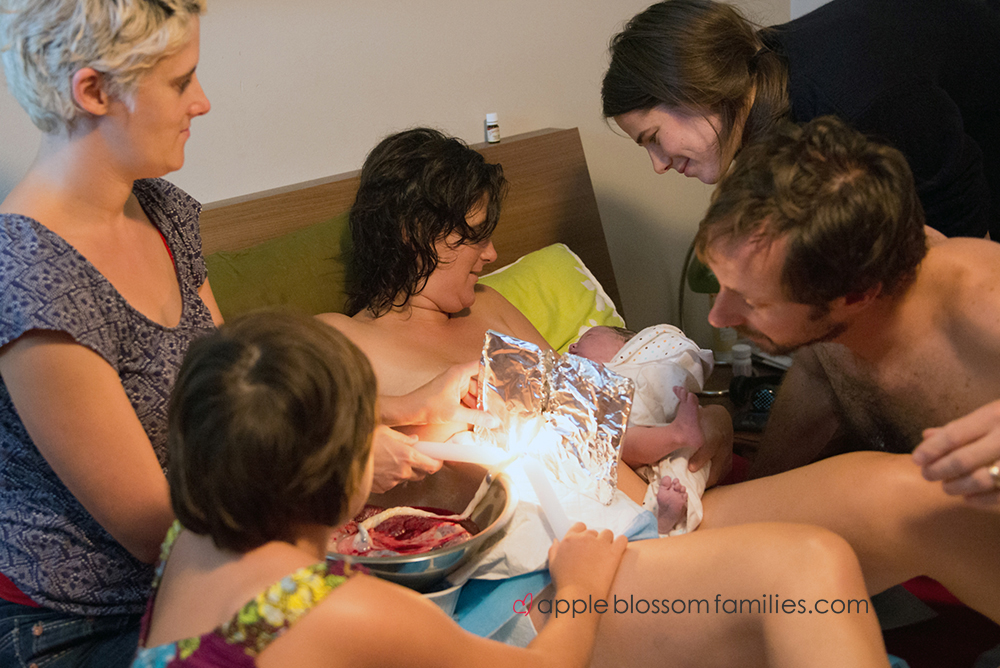
Welcoming a newborn with umbilical cord-burning
Photo: Apple Blossom Families
It’s common practice in our culture to have the partner cut the umbilical cord, playing a symbolic role in the birth by facilitating the final step in separating the baby from the placenta and welcoming him or her into the world as a new life, a new person.
The cutting-of-the-cord ritual is often completed so rapidly that it’s hard to fully appreciate the symbolic significance of the event. It happens so fast it’s actually surprisingly hard to even catch a good photo of it happening for parents to look back on and remember (at least for me: I am always scrambling around trying to catch a quick, amateur snap shot for my doula clients of this moment, unless we’re lucky enough to have a professional birth photographer with us).
Enter cord burning. Cord burning turns the separation of baby from placenta / mother into a family event that can be remembered as a fond and warm welcoming of the new addition to the family.
In the height of medical, efficiency-driven birth practices, the umbilical cord was clamped and cut almost immediately after the birth of a newborn baby. Although this often still happens today, more and more medical professionals and families are learning about the phsyiogical importance of keeping the umbilical cord intact in the early moments of a newborn’s life. Cord burning is a great way of making sure not to rush the separation of your baby from his or her placenta, which can give your baby the benefit of the multiple health benefits that come from slowing this process down. For more details about why it is considered beneficial to avoid cutting and clamping the umbilical cord too quickly, please read an earlier post on delayed cord clamping.
Cord burning is beautiful in its simplicity. All you need are a few loving hands and a pair of candles. A piece of cardboard covered in tinfoil with a whole in it as shown above can serve to create a nice barrier between flame and baby. As a really practical side note, cord burning is an amazing practice to consider in areas with limited access to the medical supplies and sterilization methods needed for clamping and cutting safely in the standard medical fashion.
The practice of cord burning is slow and peaceful, taking about 5 to 10 minutes rather than the fraction of a second of using scissors takes. The flames gradually cauterize the umbilical cord, which contains two arteries and a vein surrounded by protective Worton’s Jelly.
Many people love the idea of being the one to cut the cord. Should the partner be the one to do the honour? An older child if there is one? Does the mother want to do it herself to draw the end to giving birth completely? In the photo above, a breastfeeding baby, his older sister, his mom and her twin sister / doula are all sharing in the moment. The hands of the midwife and father are also in there. A special memory is being created with cord burning, where the whole family can be involved.
Gradually, as the cord becomes thinner and thinner with burning, it’s being twisted by loving hands until it eventually burns through and is completely severed. You can see the twisting and thinning in the next two images:
Notice how the dripping candle wax falls into the placenta bowl beneath it as the candles melt and the cord burning gets closer to completion. The smell of flames and the burning cord is almost similar to the smell of an outdoor camp fire. It might be a good idea to crack open a window, and be mindful of smoke alarms!
Because of the open flame, this practice will be more easily facilitated during home births than at hospitals, which usually aren’t too keen about having any sort of flame in their buildings! If you are having a hospital birth and would still like to do cord burning, an option would be to have a semi-lotus birth, leaving the baby and the placenta attached until you get home from the hospital where you can cord-burn away to your heart’s content.
Separation complete! I believe separating the baby from it’s placenta by cutting or burning the cord is a potentially emotional experience for both mother and baby. Sometimes I compare it to the feeling of falling asleep with someone and waking up without them, surprised and a bit unsettled at the unexpected separation. The two are so closely connected for so long during pregnancy that it feels appropriate for the separation to be slow and gentle.
From a Traditional Chinese Medicine perspective, cord burning also has been thought to have multiple positive effects on a newborn:
“By heating the cord and driving the last of the blood through there you are giving a profoundly tonic treatment for the baby who has just run a marathon…. Cord burning reduces the risk of bleeding and entry of infections. You are warming digestion which will reduce the tendency for jaundice, besides just creating a strong baby which means a good nurser.” ~ Dr. Joseph Kassal, ND (Source: gentlebirth.org)
The photo above shows the baby’s home for the past 4o-ish weeks, living inside the amniotic sac, attached to the nourishing placenta by the now cauterized umbilical cord. Beautiful!
To finish it all off, a simple knot is tied here in the umbilical cord to decrease its length. You’ll notice there is no need for the bulky, cumbersome cord clamp that is often used when the cord is clamped and cut instead of burned. Typically, the remaining cord will dry and fall off within a few days of birth.
If you haven’t watched the amazing birth video “Birth of Sloan” yet, give it a watch below. Skipping ahead to 4:16 will get you to video footage of cord burning after a beautiful, peaceful home birth (but the whole video is worth a watch!):
BirthofSloane from Natasha Hance on Vimeo.
Apple Blossom Families, who contributed the photographs for this article, has a unique way of documenting family birth experiences through her photographs. Go like her facebook page or visit her website to see more of her amazing images. Thanks, too, to Natasha Hance for sharing her video with us here.
Have you witnessed cord burning during a birth? Please leave your comments below.
Check out more articles from Birth Takes a Village
Don't miss out on other original childbirth articles like this one! Join other mothers and birth professionals on my mailing list!

